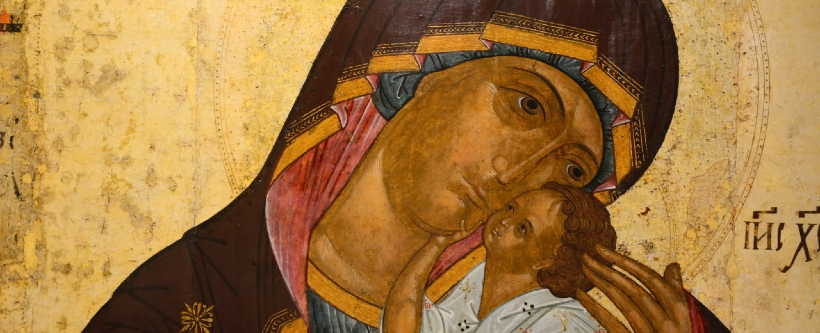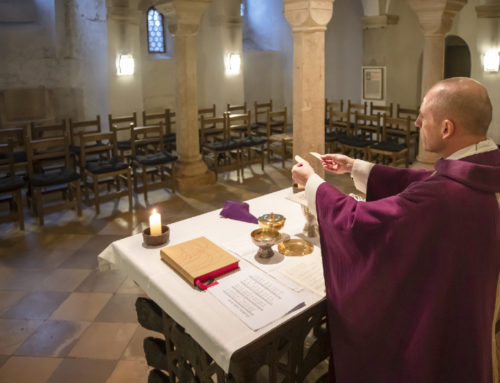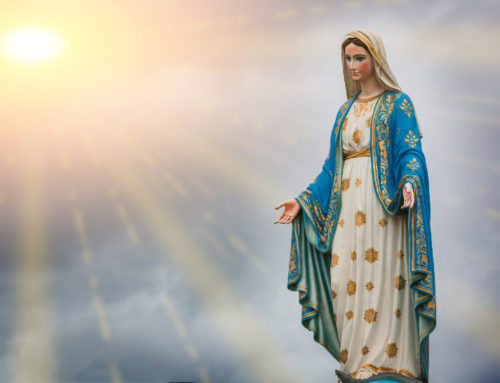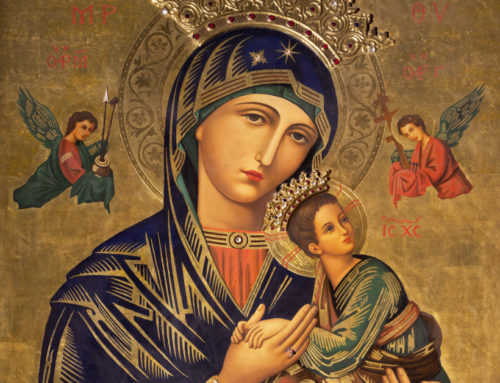
an antique Russian Orthodox icon
In the previous post, it was said the year 1054 was “the year nothing happened.” Why, then, are the events of that year recognized as pivotal for the Great Schism?
As we noted, the actions of 1054 did not break communion between the churches and, consequently, did not affect the break (schism) between the churches. The Church in Rome remained in communion with the Russian Church and other Eastern Churches for more than three hundred years after the events of 1054. However, the strain that these events placed on the relations between East and West can be said to be the trigger that began a long series of events that would eventually lead to the breaking of relations and severing of communion between the Churches of the West and the Churches of the East.
Perhaps the excommunications that had been levied were perceived to be of a broader scope than they really were. It is also possible that the events of 1054 were seen in the context of all that would later happen and, therefore, this date was pinpointed as the date of the schism. This was first noted in the work of the English historian Edward Gibbon.
Regardless of why the date was chosen, most historians no longer consider 1054 to be the exact date when the Great East-West Schism began.
How did the Eastern Churches come about?
Following the Great Schism, the Orthodox Churches slowly broke communion with the Church of Rome. Rome for the most part ignored them. Eventually, however, political situations, the Crusades, and Jesuit evangelization would change that.
We’ve already seen that tradition holds that the Maronites never broke communion with Rome but were “lost” to Rome because of their reclusiveness in Lebanon. They were “rediscovered” by missionaries. The Italo-Albanian Church remained tied to Rome, although again relegated to the backwaters.
The political situation, both civil and ecclesiastical, in the area of Lithuania and Poland led to the so-called Union of Brest (1595), in which the Ukrainian Church came into communion with Rome at their own request. The Jesuits, who helped bring thsi about, were disappointed, as they had wanted the Ukrainians to convert directly to the Latin Church.
In India, during the sixteenth century, the Portuguese Jesuits brought about a semi-forced conversion of the St. Thomas Christians (Syro-Malabar and Syro-Malankara) into the Latin Church. This did not last long, however, as some people rejected the idea of being forced to lose their heritage. Eventually the Eastern Churches divided into Catholic and Orthodox Syro-Malabar and Syro-Malankara communities.
Catholics also proselytized Egypt, leading a small number of Copts (Orthodox Coptic Church) into communion with Rome. At the same time, in 1626 some Ethiopians came into communion with Rome.
The Melkites went through a slightly different process. There the issue was the election fo a pro-Roman patriarch, which eventually led to a split (circa 1724) within the church, and the Catholic Melkites came into communion with Rome, while the Antiochians remained separated.
This practice of evangelizing and incorporating small Orthodox groups became known as “uniatism.”
Excerpt from Faulk, Edward. 101 Questions and Answers on Eastern Catholic Churches. (Paulist Press: Mahwah, NJ) 2007.




